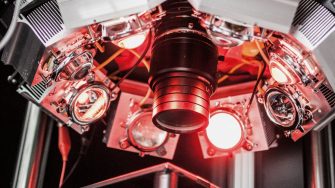
Creating highly efficient solar cells that maximise energy conversion necessitates a meticulous examination of both the materials employed in their production and the fabrication processes across the entire manufacturing chain. Our research focus revolves around identifying factors contributing to efficiency losses in solar cells and formulating strategies to alleviate or eradicate these issues. We develop a wide range of methods to assess and improve the reliability of photovoltaic cells, modules, and systems. A special focus of our group is photoluminescence imaging -- a technique that was developed at UNSW.
Our group has pioneered the use of machine learning and deep learning for different photovoltaic applications. We are using our extensive expertise in interpreting correlations between various metrics and solar cell performance to establish a new research area that combines photovoltaics and computer science. Recent examples include extracting parameters of defects in photovoltaic devices, optimising photovoltaic production lines, improving the quality of luminescence images, and developing automated decision-making for the maintenance of large utility-scale photovoltaic plants and recycling of photovoltaic modules.
Our research spans a wide variety of new applications for photovoltaics, such as agri-photovoltaics (agro-PV; the combination of agriculture and photovoltaic), building-integrated photovoltaics (BIPV), and Internet of Things (IoT).
Our students have won more than ten Best Student Awards at leading international conferences, highlighting our position as a world-leading photovoltaic research group. We also won the UNSW Faculty of Engineering Excellence Award for ‘Research Excellence’ (2019) and ‘Equity, Diversity, and Inclusion’ (2022).
For more information visit the ACDC Research Group website.
Contact us
Find more information on all the interesting projects we’re working on and request access to our materials
Research partnerships
If you’re interested in becoming a postgraduate research candidate at SPREE, please connect with us. We also welcome partnerships with industry and would love to talk to you.
